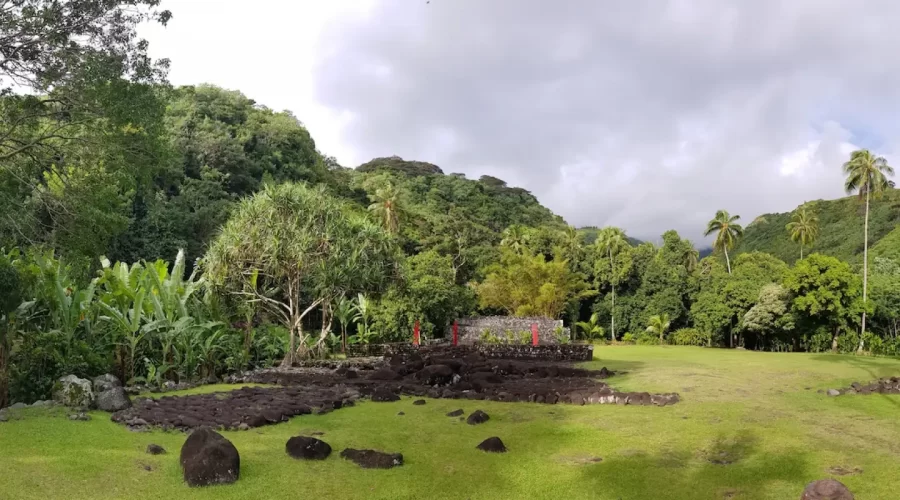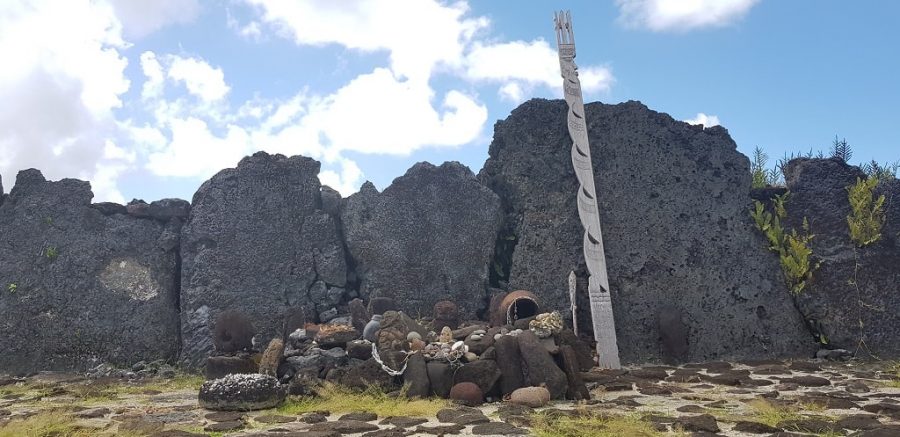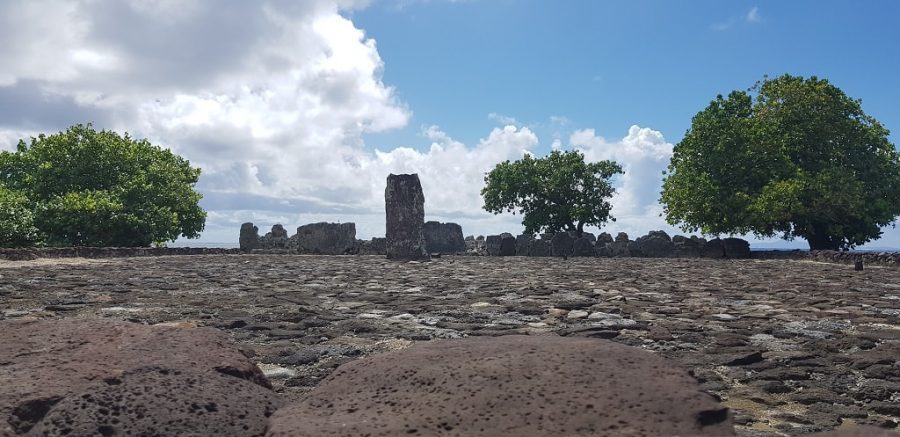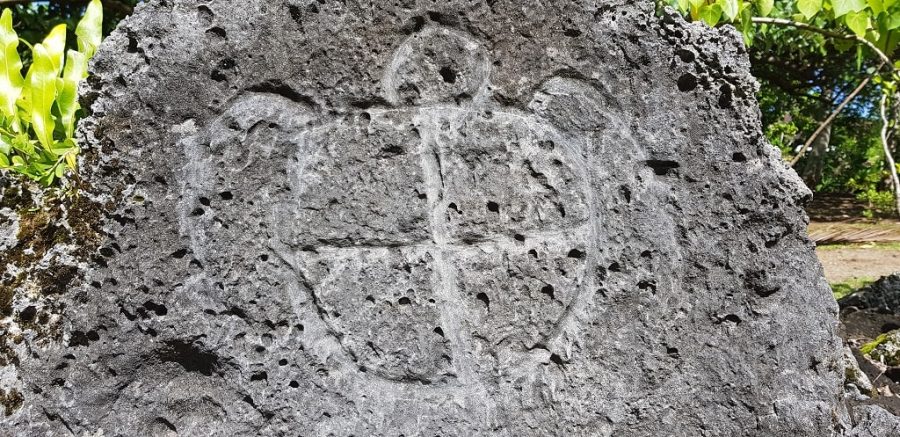The etymology of MARAE is divided between the second part RAE, which means pure and noble, and the first part MA, which refers to the fundamental values of life, such as humility, love, respect, kindness, peace, and beauty.
The history of Polynesian peoples is surprising, extending beyond what is commonly known in the West, and their culture remains relatively unknown, despite its reach throughout the emerged lands of the world’s largest ocean, the Pacific.

Marae located on the island of Tahiti
The Marae are ceremonial/religious constructions found throughout Polynesia in different shapes, dimensions, and degrees of significance. However, they exhibit recognizable patterns, such as the materials with which they are built: coral (Te-Papa-Farepu’a) and basalt (Te-Papa-Māhora), a combination uniting the sky, the earth, and the sea.

Ceremonial altar of the Marae of Taputapuatea, where some of the offerings made by pilgrims can be seen
The Marae are not only built as an offering to the gods but can also be of a community nature to honor clans, individuals, or elements of the natural environment. Each thing or being corresponds to a Marae, which, like an umbilical cord, connects the visible part that corresponds to humans (Te-Ao) and the invisible part that corresponds to the Gods (Te-Pō).
The first constructions that have been dated are approximately from the year 1400 AD, with a peak in the construction of these sites from the sixteenth century onwards. We can find many of these sites within the same island, representative of different social strata. One of the great attractions of the Polynesian islands is exploring their jungles and discovering Marae, hundreds of years old, almost forgotten after the passage of time but still surrounded by an intoxicating halo of power. For example, the Marae located in Nuku Hiva, on the way to the Vaipo Waterfall.
The most important Marae, which still receives an annual pilgrimage from all points of Polynesia, is the Marae of Taputapuatea on the island of Raiatea, from which, like an octopus with its tentacles, the Polynesian people spread throughout the Pacific Ocean.

One of the coral esplanades of the Marae of Taputapuatea
Countless Marae can be found throughout Polynesia. Many are located on the edges of the roads that surround different islands, such as Tahiti or Bora Bora. Others can be found in the middle of the jungle, like the one mentioned in Nuku Hiva, and others in picturesque and surprising environments, such as those along the path of ascent to the Belvedere of Mount Rotui in Moorea.

Detail of the famous geoglyph of a turtle in a Marae in Bora Bora
Although some Marae receive more visitors and offerings than others, such as the aforementioned Taputapuatea, these are still sacred places that represent a fascinating past and a culture that will still give much to talk about.
Share

I have this money to travel per person

Be the first to leave a comment!
Comments and opinions about Marae, the ceremonial complexes of Polynesia
Share your experiences and queries with us, we will be happy to lend a hand. Get in touch here!